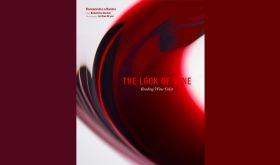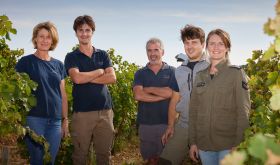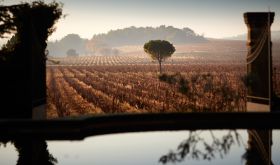This, the fifth, MW Symposium seems to me to have attracted a better crowd than any of its predecessors. The talks have been of high quality with questions to match. Here, in no particular order, are some of the things that emerged.
The proceedings of Day 1 were pretty anti-American (notwithstanding a significant number of American MWs and other participants). The chief complaint was the domination of scores and the 'big, awesome' style of wine. (In fact very dark, very alcoholic wines came in for a lot of flak throughout.) Singapore wine writer Ch'ng Poh Tiong was particularly vociferous and, it has to be said, entertaining in his criticism of what he called 'the Coca-colonisation of wine'. Doug Frost MS (Master Sommelier) MW of Missouri mounted a particularly spirited defence.
Day 2 was characterised if anything by laying into Australians, partly because they have such annoying successful wine brands (cf the French) and partly because they continue to use (albeit on a diminishing scale) such naughty words as Burgundy and Port in Australia itself.
This last came up after a talk from René Renou, head of the Appellation Contrôlée authority, who spouted all the usual stuff about terroir and patrimonie before cleverly winning us over with an allusion to that great Viennese, Sigmund Freud. 'Some New World wine producers think they have to kill their father (Old World wine) in order to succeed. But they don't need to kill their father, just to establish their own identity. There is no need for an Oedipus complex, as I keep telling my son.'
Renou also admitted, incidentally, that 'two – five per cent' of all AC wine is not of acceptable quality. I'd put it higher than that, I must say.
Victor de la Serna, well known to followers of 'your turn', was asked by Sebastian Payne MW, wine buyer for The Wine Society, whether he thought there was any future for sherry. Victor argued that producers should abandon the solera system which was adopted only in a time of surplus a century and a bit ago and return to vintage-dated sherries which would get the wines talked and, more importantly, written about. Tio Pepe 2003 here we come.
He was also asked about single vineyard Rioja and made the interesting point that only France has legislation in place to guarantee that a wine stating the name of a vineyard on the label actually comes from that vineyard. Even in Barolo and Barbaresco you have to take the producer's claim on trust.
We were served some great Rieslings and some great sweet wines from around the world over our two lunches (I write this before the Gala Dinner in the Rathaus). One standout wine today was Schloss Johannesberg's Spätlese 2001 which should make a great bottle and is already delicious. This historic property's energetic and ever-smiling Director told us that he was determined to carry on making the estate's Spätlese in the traditional fruity style, not the new, fashionable and often grim dry style as prescribed by the VDP for all top layer Spätlese by their members [see my recent story]. He later told me that if he had been forced to make his Spätlese trocken, he would have left the VDP.
2001 has produced some beautifully pure Rieslings and Grüner Veltliners from Wachau, Kremstal, Kamptal but, like their German counterparts, they're extremely youthful.
China is now one of the most important wine consumers and Moldova, according to official figures, a significant wine exporter. France continues to be one of the world's more important importers of wine, shipping in 520 million litres of wine last year (and this when she has a serious national surplus of basic red and shrivelling production of brandy and vermouths). Wherever does it all go?!
Hubert de Boüard of Ch l'Angélus in St-Emilion spoke passionately against too much concentration, arguing that yields of 10 hl.ha were often detrimental to wine quality (quite right). He also pointed out re the ultra-fashionable practice described as doing malolactic fermentation of red wines in barrel that what's important is to get the wine into barrel when it's still warm from fermentation – the malo is a side-issue.
Corks of course came in for a lot of flak. Michael Brakjovich of Kumeu River in New Zealand put on a blind tasting of pairs of wines, a Marlborough Sauvignon Blanc and his own Pinot Gris, Chardonnay and Bordeaux blend Melba, one stoppered with a natural cork, the other with a Stelvin screwcap. The screwcap versions of the first two, the aromatic whites, were streets ahead of the corked bottles, but the differences between the two samples of the oaked wines were much less clear-cut.
It is said that Ch Haut Brion have been testing their red wines over at least 10 years in screwcaps, with great success.
Michael Brajkovich of Kumeu River adds:
I have read you comments about the comparative wines that I showed, and concur about the wooded wine effect. It will be interesting to follow them over the next few years. I must say that having tasted these wines very often, we are starting to see the differences very clearly, but for most tasters on the first try it is much less so.
The Château Haut Brion experience that you allude to was in fact in the 1970s, using the 1969 vintage wine. The trial went for 10 years with no discernible differences seen until the screwcaps started to break down and fail, causing oxidation and the abandonment of the trial. They then concluded that screwcaps were not suitable for a great growth where many decades of potential bottle ageing was a requirement. This information was passed on to me by [British wine writer] Andrew Jefford, who had been in contact with M Delmas at the Château. The sealing technology has progressed somewhat since then, and Pechiney will guarantee their Stelvin cap for 10 years against failure, provided that the correct bottle and spinning machine head are used. From what we have seen they should last at least 20 years, which is plenty for us!
Austrian reds still have a way to go before they deserve serious attention from wine buyers outside Austria. But – who knows – perhaps I will be bewitched by what is served at tonight's dinner?













